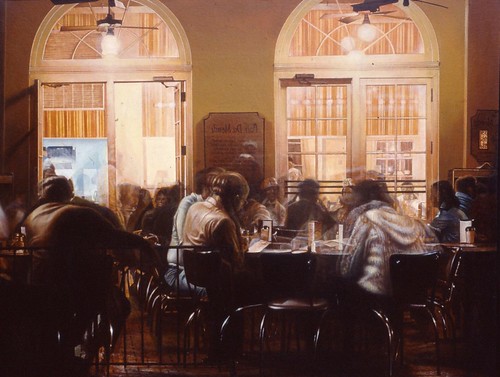French Art – Famous French Artists & Paintings

French art has played a crucial role in many art movements, both past and present. It is perhaps best known for its influence in impressionism and the importance of the French capital, Paris, to the art world. Paris’ Louvre Museum has retained its status as one of the premier spots for art appreciation in the world and even houses The Mona Lisa, one of the world’s most famous paintings.
The key periods of French art include Prehistoric, Medieval, Renaissance & Mannerism, Baroque & Classicism, Rococo & Neoclassicism, 19th & 20th Century Contemporary movements.
The Merovingian dynasty of the Franks was significant in France and Germany., from the fifth century to the eighth century. The Merovingian period of the fifth century began a change in French art which was to continue up to the present day, with new movements being created all the time.
Merovingian’s catalyst for art development was continued on with Carolingian art over a 120-year period from 750 to 900. After Carolingian rule closed around 900, there was little more development or production of significant French art movements for some 60 years. France became a divided country at this point and there were not the right conditions for artistic creativity. The 10th and 11th centuries were dominated by local monastries who took a significant role in France’s art production at that stage.
Prior to the respected Gothic period that was the Romanesque art of Western Europe for around two hundred and fifty years, from 1000 A.D. to the middle of the 12th century in France. The name refers to the influence of, and return to, Roman styles and principles in architecture and art which this movement used.
Gothic art and architecture then took over French are for around 300 years. Whilst originating here, it actually spread quickly to other parts of Europe. The later International Gothic style had less of a reliance and prominence of religion than its former, and it then went onto the further develop from there into Renaissance art. Gothic art included sculpture, panel painting, stained glass, fresco, and illuminated manuscript most prominently.
The French invasion of Italy in the late 15th century allowed the influence of the Renaissance to fully take hold of France’s art direction and leave a mark which remains strong even today.
The French Revolution and the Napoleonic wars brought in new influences which helped to push Renaissance art into new directions and bridge the gap between Renaissance art and the later styles of Romanticism and later Impressionism.
Romanticism brought French landscape painting to the forefront and later led to Gustave Courbet and the Barbizon school as key markers in the further changes to the status quo. The late 19th century brought French Symbolism from Gustave Moreau, the professor of Matisse and Rouault, as well as Odilon Redon.
Impressionism brought an array of French art to the forefront, led by Claude Monet and his use of landscapes and carefully prepared gardens to develop artistic coverage of light changes and vivid paintings. It started the progress towards the many new styles that we have today.
For contemporary art, Impressionism, Cubism, Dada, Expressionism & Surrealism have roots in French art. The early years of the twentieth century were dominated by experiments in colour and content which Impressionism and Post-Impressionism had unleashed. This led to the likes of cubism and fauvism, which themselves have inspired some of the new art movements that appear even today.
Tags : Painting Instructional history Book of Art Home Mailbox /aerobed/ aframeshop